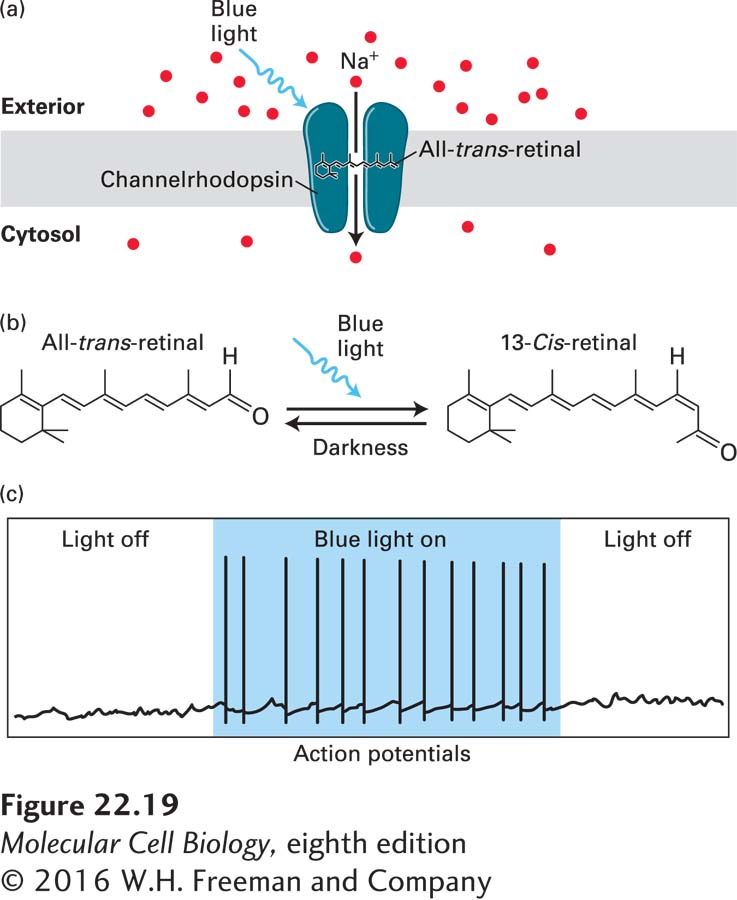
FIGURE 22- 19 Channelrhodopsins and optogenetics: activating neurons with light. (a) Light- activated ion channels. Channelrhodopsins are light- activated cation channels that were initially isolated from the green algae Chlamydomonas reinhardtii, where they mediate phototaxic responses. The channel has seven transmembrane domains, and is covalently linked to the photo- isomerizable chromophore all- trans-retinal. (b) All- trans-retinal absorbs blue light (~470 nm) and changes to the 13- cis-retinal conformation. This leads to a conformational change in the channel, opening a pore through which cations can flow. Opening of channelrhodopsin, shown in (a), leads to influx of Na+ from the extracellular solution into the cell, resulting in rapid depolarization of excitable cells. When the light is removed, retinal returns to the all- trans conformation and the channel closes. This is shown in (c) where illumination of a neuron expressing channelrhodopsin with blue light triggers actions potentials as long as the light is on. See J. Wong, O. J. Abilez, and E. Kuhl, 2012, J. Mech. Phys. Solids 60:1158– 1178.
[Leave] [Close]